What fruits are better for diabetes?
As the fruit contains glucose, fructose, sucrose, starch, pectin, etc., which fructose metabolism does not require the participation of insulin, pectin has soluble fiber with the role of delaying glucose absorption, and fruit is rich in a large number of vitamins, minerals and water, which is very beneficial to diabetes health. But on the contrary, which also contains glucose for diabetic patients are unfavorable factors, for diabetic patients must be based on the severity of the disease and the degree of sugar content of the fruit to determine the need to eat what fruits, on the condition of the more serious, higher blood glucose, of course, can not eat fruit. If the diabetes control is satisfactory or good, you can eat a small amount of fruit, the same emphasis on timing and quantity, must also be based on the method of exchange, reduce the amount of staple food, eating fruit is best in the middle of two meals. Which fruits are allowed? For example, like fruits with low sugar content, 4%-7% sugar content fruits are watermelon, blancmange, strawberries, loquat these can be eaten. Relatively low sugar content of 8%-10% sugar content of the fruit, there are lemons, duck pears and fresh coconut, plums, cherries, cantaloupe, grapes, pineapple, peaches, these are the sugar content of the medium-low level, eat must control the amount. Like apples, apricots, figs, grapefruit, oranges these can also eat, but if you eat, do not exceed 50 grams, according to the sugar content to reduce the main food.
What fruits are good for diabetes?
It's good for diabetics to eat fruits with lower sugar content and a slower rate of glycemic rise, such as prunes, watermelon, melons, and strawberries.
Diabetic patients should not eat fruits arbitrarily, they can eat some fruits in small quantities under the condition of good blood glucose control, doctor's guidance, and control of total daily dietary calories. In principle, there is no which kind of fruit is the best or forbidden to eat. Choosing fruits with low sugar content and slow rate of glycemic rise is more conducive to keeping blood sugar stable and therefore relatively better. Fruits with low sugar content can be eaten in small amounts, such as prunes, watermelon, melon, strawberries, oranges, grapes, lemons, peaches, plums, apricots, loquats, pineapples, coconuts, cherries, olives, etc.; while bananas, grapefruit, pomegranates, lychees, apples, pears, mangos and other fruits have a slightly higher sugar content, and should be consumed with caution; jujubes (especially dry jujubes, honey jujubes), dried fruits (persimmon cakes, raisins, dried apricots, cinnamon, etc.) have a higher sugar content, and are not recommended. Dates (especially dried dates, honey dates, dried fruits (persimmons, raisins, dried apricots, cinnamon, etc.) contain more sugar and are not recommended.
It should be noted that if the patient's blood sugar control is not good, it is not recommended to eat fruit; fruit should not be eaten immediately before and after meals, it is best to eat a small amount of food between meals; the sweetness of taste does not correspond to the amount of sugar, can not be based on taste to judge the amount of food; cucumber, tomatoes and other low sugar content, you can consume a moderate amount of alternative fruits.
This content was reviewed by Dr. Jinxiao Wu, Deputy Chief Physician, Department of Endocrinology, Army General Hospital of the People's Liberation Army, China.
Click here for details of the doctor's answer
There are many sugar lovers think they can not eat fruit, in fact, sugar lovers can eat fruit in moderation, although fruit is rich in sugar, but fruit is also rich in water, dietary fiber, water helps to reduce the sugar load of the fruit, dietary fiber can slow down the speed of digestion of food, can delay the time of the sugar into the bloodstream, but also to help the stability of blood sugar; fruit in addition to sucrose, glucose, but also rich in fructose In addition to sucrose and glucose, fructose is also rich in fructose, and fructose has less impact on blood sugar, they and glucose metabolism process is different, comprehensively speaking, as long as a moderate amount of fruits, if you eat, for sugar addicts can add a lot of beneficial substances, the benefits outweigh the drawbacks. For sugar lovers, the recommended one-time fruit intake of 100~150g, the best daily intake of no more than 300g, up to 400g, 400g is about two apples, a handful of berries.
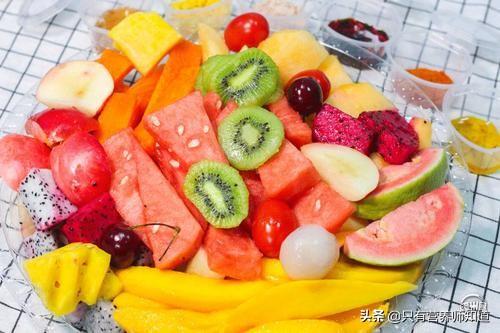
Of course, there are fruits with high sugar content and fast glycemic rate, so sugar lovers can reduce the intake of this kind of fruits and choose some fruits with lower sugar content and slower glycemic rate to eat. There are two values that intuitively reflect the glycemic effect of food, one is "glycemic index" and the other is "glycemic load". Glycemic index is a response to the quality of food, the rate of blood glucose per unit of time, the glycemic load is a response to the relationship between food intake and elevated blood glucose, the general glycemic index is higher than 55 foods belong to the higher glycemic index of food, the effect on blood glucose is more pronounced, if it is higher than 70 is a high glycemic index food, the sugar lover is best to avoid or try to eat as little as possible.
Lower glycemic index of the fruit is actually quite a lot, such as common apples, pears, peaches, oranges, tangerines, kiwi, cherries, strawberries, grapefruit, mango, papaya, etc., a lot of sugar friends will ask: peaches, mango, papaya, oranges these so sweet? Doesn't it still have a big impact on blood sugar? Don't tease me. In fact, the sweetness of the fruit and its sugar content is not equal to how, its rate of glycemic is not equal to the sugar content, we can not rely on the sweetness of the fruit to determine their impact on blood sugar, such as sweet mango, glycemic index is actually only 52, and does not belong to the high glycemic index of fruit. The sweetness of fruits is relatively more dependent on the proportion of fructose they contain, the proportion of fructose is higher, the fruit will be sweeter, the sweetness of fructose is glucose, sucrose, 2 to 3 times, eat sweet, but the metabolic process of fructose and glucose, sucrose and the metabolism of fructose is different, and the impact on blood sugar is very small.
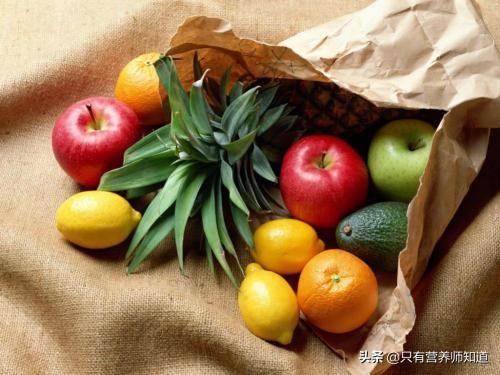
Naturally, there are fruits that don't taste sweet, but the glycemic rate can't be ignored, such as hawthorn and dragon fruit, hawthorn tastes very sour, because the organic acid content of hawthorn is too high, the sour taste overshadows the sweetness, we mistakenly think that its sugar content is low and the glycemic index isn't high, in fact, the glycemic rate of hawthorn is still faster; dragon fruit is not strange to everyone, it tastes dull and tasteless, some people even suspect that it doesn't contain any sugar at all. But in fact, dragon fruit sucrose, glucose content is rich, just the proportion of fructose is relatively small, eat up not so sweet, but its glycemic index is actually 59 oh, eat more on the impact of blood sugar is quite big. This type of fruit is not impossible to eat, but do not excessive intake.
In contrast, some fruits have high sweetness, but the glycemic index is not high, more typical are grapes, bananas, they are typical high fructose fruits, but their total sugar content is really a little high, and can not be eaten; there are also some fruits with a high glycemic index, the sugar content is also high, but the glycemic load is lower, the typical fruits is the watermelon, watermelon glycemic index is as high as 72 ~ 75, but does not mean that sugar lovers can not eat watermelon! The low glycemic load of watermelon can be understood as, although the glycemic factor in watermelon is very effective in raising sugar, but it is too dispersed, and there are fewer glycemic factors per unit volume, so as long as it is consumed in moderation, the impact on blood glucose is also not great, so sugar lovers can eat a small amount of watermelon, recommending a one-time 100g or less, and about 300g per day.
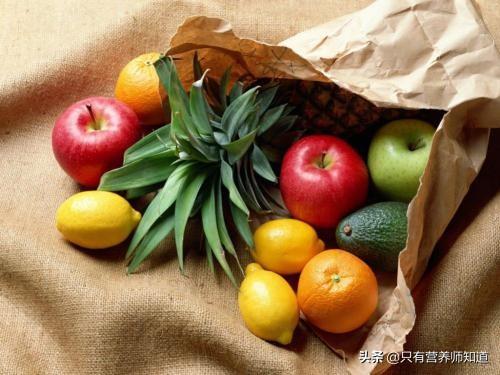
Some fruits with high sugar content, glycemic load and total sugar content are also higher naturally unfavorable for sugar lovers to eat, such as lychee, durian, cinnamon, fresh dates, pineapple and other fruits, but does not mean that sugar lovers absolutely can not eat these fruits, but try to avoid eating more. Eat fruit is best to eat fresh, do not juice, juicing destroys the integrity of the dietary fiber of the fruit, fruit volume also decreased, sugar concentration, glycemic load increased, the impact on blood sugar is more serious. Sugar friends also do not go to choose fruit preserves, dried fruit to eat, preserves in the extra added refined sugar, the impact on blood sugar is more serious, dried fruit air-dried fruit water, reducing the volume, glycemic load is higher, intake of a certain amount of blood glucose may have a greater impact on blood glucose.
Thank you for your invitation! The fruits that diabetics can eat are cherries, strawberries, loquats, etc. These fruits mainly contain fructose, which is not as well absorbed as sucrose, does not raise blood sugar quickly, and provides diabetics with nutrients while having a small effect on the patient's blood sugar.
Can diabetics eat fruits? This is a question that many diabetic patients are worried about. It is true that fruits contain more sugar than vegetables, about 5%-10%, but fruits also contain a lot of vitamins and dietary fiber, and vegetables also contain a lot of vitamins, but the vitamins in vegetables will be destroyed in cooking, while the vitamins in fruits are easier to be absorbed and utilized. Therefore, with good glycemic control, diabetic patients can consume fruits, but they should choose to consume the right fruits at the right time.
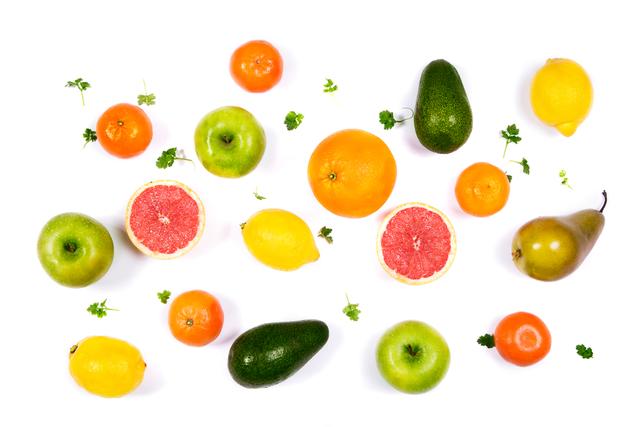
The sugar content of fruits is very high. It is roughly as follows: watermelon is 3-5%, apple is 12.3%, duck pear is 10%, mainly containing fructose; peach is 10.9%, citrus is 11.5%, mainly containing sucrose; grapes contain 9.9% sugar, strawberry is 6%, mainly glucose and fructose.
For diabetic patients, if the blood sugar control is not good, especially when the fasting blood sugar is too high, it is recommended not to eat fruit for the time being, but to eat raw tomatoes and vegetables with low sugar content instead. For diabetic patients with stable blood glucose control, you can eat fruit, such as fasting blood glucose at about 7mmol / L, postprandial 2h blood glucose in the case of about 8mmol / L, you can eat fruit between meals, from the main meal can be reached 3h is better, and also remember to eat 200g (4 tael) of fruit to be corresponding to the 25g of staple food subtraction.
In addition to fruits, diabetics can also eat some nuts, and nutritionists have found that eating nuts in moderation can prevent diabetes due to the fact that nuts contain unsaturated fatty acids, dietary fiber and magnesium, which improves the body's secretion of insulin and enhances insulin's ability to dispose of glucose, thus exerting a role in controlling blood sugar.
Nuts, also known as shell nuts, are categorized into two groups: tree nuts, such as almonds, walnuts, cashews, chestnuts, etc.; and seeds, such as peanuts, pumpkin seeds and watermelon seeds.
Fruits should be consumed selectively, choosing fruits that are low in glycemic index and sugar content, and choosing the right time and type of eating is even more important. Mixed grains, soy and soy products as well as vegetables and fish are also good choices.
Good life from the beginning of health, the beginning of health, health science professional media!
Seasonal seasonal fruits, should be able to eat, because people must maintain a sufficient level of nutritional intake every day, to ensure normal life movement, if the long-term lack of nutrients, in fact, more terrible than high blood sugar, just to control the number of eating, basically to do protein, energy, amino acid balance.
In the choice of fruit, most people think that "not sweet" fruit can be eaten more, but in fact, fruit, whether sweet, sour, all contain a certain amount of glucose and fructose, can not be based solely on eating with acid to judge the glucose and fructose content of the high and low. Diabetic patients should choose more low glycemic index fruit, help to maintain blood sugar stability.
Green plums, watermelons, melons, oranges, lemons, grapes, peaches, plums, apricots, loquats, pineapples, strawberries, sugarcane, coconuts, cherries and olives can be used by diabetics. These above fruits are relatively lower in sugar content.
Fruit can be eaten by diabetics; eating according to healthy dietary guidelines and controlling the amount of various foods is the key. Grapes, for example, are not a problem for people with stable blood sugar control to eat between meals, eating seven, eight or nine of them.
Grapefruit, cucumber, tomatoes and other low-sugar fruits. It's not that sour fruits are low in sugar, such as pineapple, etc. Although they are said to be sour, they are quite high in sugar, so you have to keep your mouth shut and your legs open for diabetes!
You can eat a lot of fruit with diabetes.
Many people are under the impression that once you have diabetes, you can't eat all sweets.
In fact, this understanding is incorrect.
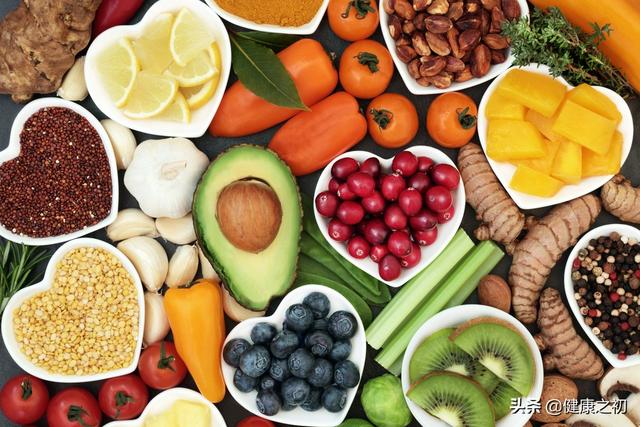
Fruit can also be safely consumed by diabetics as long as they take into account the type of food they eat, when they eat it, and how much they eat.
First of all, it is important to specify the type of food to be eaten
Although, it can be said that there are no absolute dietary contraindications of carbohydrates for diabetics. But in comparison, fruits that are lower in sugar and safer to eat are the first to be recommended.
One of the most important indicators of this is the Glycemic Index (GI) value, which reflects the degree of elevation of the body's blood sugar caused by eating.
It can be said that the higher the GI, the higher and faster the blood sugar rises;
The lower the GI value, the less elevated and slower the rate of glucose rise.
The GI value is an important indicator to guide the diet of diabetic patients, which can help diabetic patients to maintain a smoother blood glucose level without fluctuating too drastically.
Fruits, depending on the GI value, are categorized as low GI fruits, medium GI fruits, and high GI fruits. Low and medium GI fruits are recommended for diabetics.
Secondly, the timing of eating
It is recommended that people with diabetes consume moderate amounts of fruit between meals and avoid consuming it during meals.
In addition, fruits can also be consumed in moderation before and after exercise to replenish the sugar consumed and avoid hypoglycemia.
The above timing, on the one hand, can avoid the occurrence of hypoglycemia in diabetic patients; on the other hand, it is conducive to maintaining the stability of blood glucose levels.
Again, the amount of food eaten
Theoretically, there are no absolute dietary contraindications of carbohydrates for diabetics. But the quantity consumed must be controlled.
If you eat fruits or desserts, then be sure to deduct a corresponding amount of entrees from your meal. Ensure that the overall carbohydrate intake is balanced and consistent.
Drastic fluctuations in blood sugar can be more harmful than stable high blood sugar
If the blood glucose level is at a relatively stable high level, the body will gradually adapt somewhat. However, if blood glucose fluctuates more drastically, the body will not be able to adapt. This leads to easier damage and apoptosis of vascular endothelial cells, which promotes the occurrence and development of vascular complications and increases the incidence and mortality of cardiovascular and cerebrovascular diseases.
In addition for some patients with type 2 diabetes who still have insulin secretion, drastic fluctuations in blood glucose levels can also impact the pancreatic islets, increasing the burden on the islets and leading to further impairment of pancreatic function.
Healthy Beginnings, Health Science Specialized Media, Better Life from Healthy Beginnings
This question and answer are from the site users, does not represent the position of the site, such as infringement, please contact the administrator to delete.